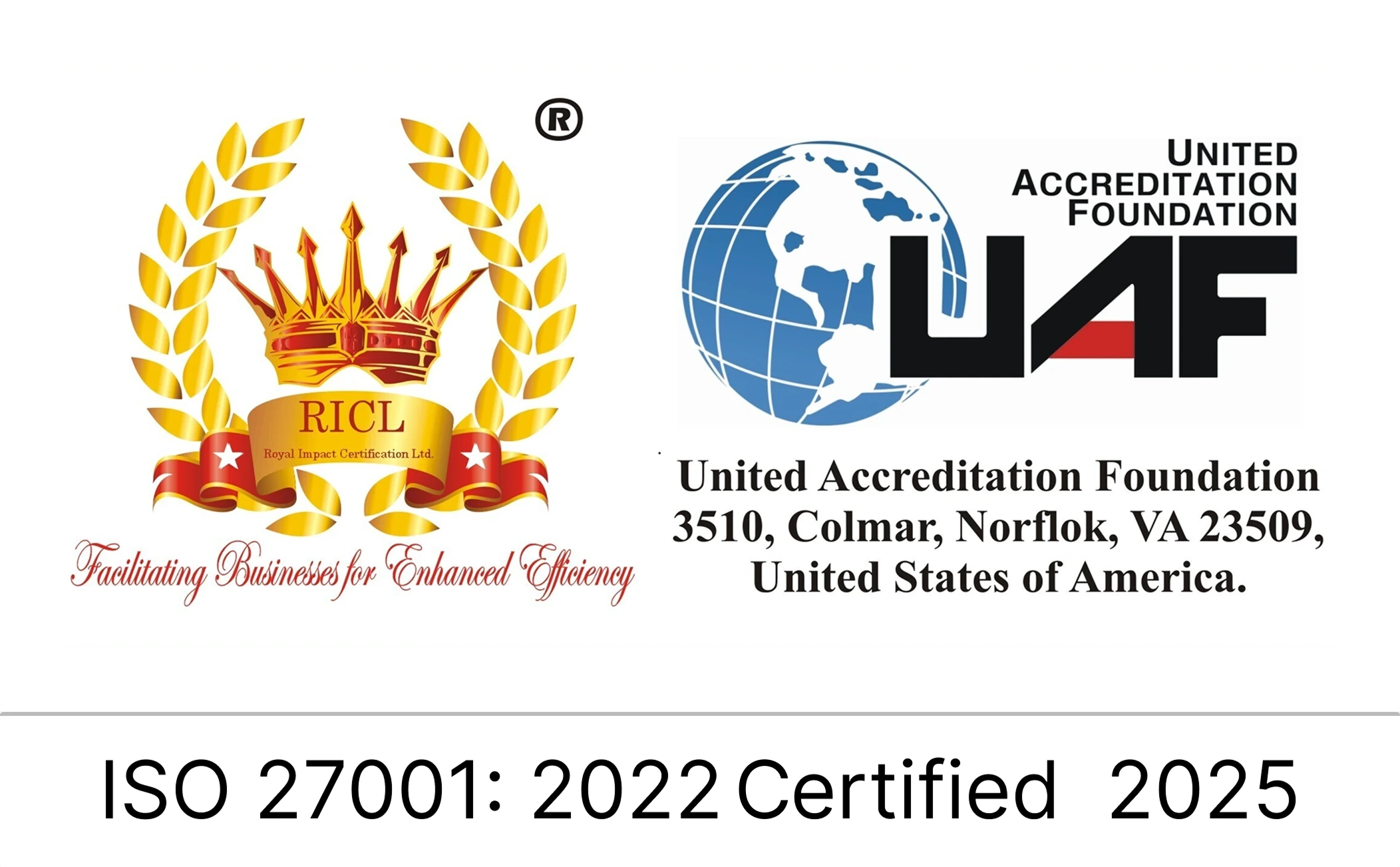Using SecurityReviewAI to Meet NIST AI RMF Requirements Faster

Still scrambling to document AI risks the night before compliance reviews? Your competitors aren't.
The NIST AI Risk Management Framework is a comprehensive approach that demands real evidence across governance, mapping, measurement, and management.
But traditional security design reviews don’t scale. They demand senior security expertise, drag engineering teams into long workshops, and result in scattered and manual documentation that rarely maps cleanly to NIST.
But what if there’s something that will let you run security design reviews for entire systems or individual features using your real specs, diagrams, and requirements? Something that can flag security threats early and map them directly to the NIST AI RMF without starting from scratch or stalling delivery?
This might sound too good to be true, but imagine not going through the three-week review cycles and endless meetings. Worth checking out, right?
Table of Contents
- Why Most AI Security Reviews Fail Before They Even Start
- How to Close NIST AI RMF Gaps Without Breaking Your Team
- From Raw Specs to NIST-Aligned Security Review in Five Steps
- What Continuous Security Looks Like in a Real Product Team
- What Makes SecurityReviewAI Different (And Useful)
- Get Real NIST AI RMF Coverage Without Burning Your Team
Why Most AI Security Reviews Fail Before They Even Start
Most teams are set up to fail when it comes to securing AI systems. You’re either scrambling to meet compliance deadlines or retrofitting security into systems that are already in production. The result: rushed assessments, incomplete documentation, and missed risks. Just so you know, that’s exposure.
And with NIST AI RMF gaining traction as the standard, those shortcuts won’t hold up. Regulators, partners, and even your own executive team are going to want real answers instead of recycled threat models and generic security statements.
The mindset that creates false confidence
Too often, AI risk management is treated like a formality. Security and product teams fill out templates, reuse threat lists, and do just enough to say it’s been reviewed. But the NIST AI RMF wasn’t built for that. It’s built for accountability.
Each function of the framework (Govern, Map, Measure, and Manage) expects traceability and substance. Instead of saying that the threat was considered, you need to show how it was identified, why it matters, and what you’re doing about it. That takes real technical input.
This becomes a serious problem when audit season comes around. Or worse, when something breaks, and you’re forced to prove due diligence after the fact.
NIST AI RMF demands real engineering effort
Meeting the NIST AI RMF means you need a line of sight from system behavior to security decisions. That includes:
- Documented threat scenarios tied to specific features or data flows
- Controls that are justified based on actual architecture
- Continuous updates as your system learns, evolves, or integrates new capabilities
- Evidence that risks were understood and addressed
This is the bare minimum if you’re deploying AI in regulated environments, handling sensitive data, or preparing for incoming legislation. You need structure, traceability, and repeatability. And you need it early in the design lifecycle.
Traditional design reviews are too damn slow
Even with an internal security team, the process is painful. They take weeks to complete, require high-skill manual effort, and rarely stay consistent across teams or features. You might catch the big issues, but gaps slip through especially when things are moving fast.
- Threat modeling takes weeks, not days
- Reviews are wildly inconsistent based on who runs them
- Results vary depending on who's in the room
- Documentation goes stale before you even finish it
Worse, none of this fits neatly into modern AI product lifecycles. When features ship weekly and systems adapt dynamically, static review processes simply don’t work. That’s how security debt piles up, and NIST AI RMF alignment slips out of reach.
Your AI system changes faster than your review process
AI systems evolve constantly through model updates, pipeline changes, data source shifts, or new integrations. However, most security review processes are static. You run them once, generate a PDF, and move on. That might work for traditional software, but it doesn’t work for AI.
By the time your threat model is done, your system has already changed. That means you’re making risk decisions based on outdated assumptions. Or worse, missing new attack surfaces entirely.
And because most reviews rely on human bandwidth, there’s no way to keep up. Even minor changes (like retraining a model or tweaking APIs) rarely trigger a fresh review because doing that manually just isn’t feasible.
This is how security blind spots grow and why traditional reviews fall short in dynamic AI environments.
How to Close NIST AI RMF Gaps Without Breaking Your Team
If your AI system is subject to NIST AI RMF, you know the expectations are so much more than checklists. You need structure, traceability, and actionable documentation mapped to four core functions: Govern, Map, Measure, and Manage. But most teams don’t have the time, headcount, or tooling to do that consistently.
SecurityReviewAI closes that gap by making NIST alignment part of the design review process. It automates the mapping, connects directly to your existing documentation, and flags risks before they become audit findings.
Reviews are mapped to the NIST AI RMF from day one
You’re not starting from scratch or retrofitting security into a system that’s already shipping. SecurityReviewAI structures your review to align with the NIST AI RMF from the beginning across all four areas:
- Govern: Define clear objectives, roles, and responsibilities
- Map: Document system behavior, data flows, and expected outcomes
- Measure: Identify specific threats, risks, and required controls
- Manage: Track findings, assign ownership, and build repeatability
This approach gives you defensible documentation. If regulators or auditors ask how your system handles risk, you have a clear and structured answer.
Use what you already have
Traditional security reviews usually ask you to translate everything into new templates or diagramming tools. That’s a time sink, especially if your specs already exist in Confluence, Google Docs, Jira, or elsewhere.
SecurityReviewAI connects directly to these tools, so you don’t lose time or context. It pulls in:
- Jira tickets (features, user stories, epics)
- Confluence or Google Docs (design specs, functional requirements)
- Existing architecture diagrams, deployment docs, and PRDs
- …and more
You don’t have to reformat, summarize, or duplicate your work. The system uses what you already have and starts the review automatically.
AI analyzes your design like a real reviewer
Under the hood, SecurityReviewAI uses a vector database to index your project’s documentation and diagrams. It looks for keywords, parses architecture, reads data flows, and understands how systems connect.
From there, it:
- Identifies sensitive data and critical pathways
- Generates relevant threat scenarios based on system behavior
- Suggests practical countermeasures based on the risk level
- Maps each scenario and mitigation back to NIST RMF requirements
It also interprets diagrams, so if you’ve documented workflows or infrastructure, those get reviewed too. No need for additional manual conversion.
What you get is a security review that’s fast, traceable, and specific to your system, and not a generic report or compliance artifact.
From Raw Specs to NIST-Aligned Security Review in Five Steps
Traditional security reviews take weeks because they’re built around manual interpretation. But with SecurityReviewAI, you can take your existing documentation (specs, diagrams, Jira tickets, etc.) and turn it into a structured and NIST AI RMF-aligned review, step by step.
Here’s how it works:
Step 1: Define security objectives based on your product
Don't start from scratch. Use your product spec to propose security objectives that align with:
- Industry standards relevant to your domain
- Your cloud context (AWS, Azure, GCP)
- Your specific data model and sensitivity
For example: Enforce real-time monitoring and anomaly detection for sensitive expense data stored in AWS S3.
Objectives are specific to your system’s functionality, the data it handles, and the risks tied to your infrastructure. That gives you a solid starting point and traceability for the Govern function in NIST AI RMF.
Step 2: Identify sensitive data without digging through docs
The system automatically builds a data dictionary: a structured list of the sensitive data your application handles, where it lives, and how it moves.
It pulls from your diagrams, technical specs, and linked documents. You don’t have to tag fields or fill out forms.
Typical assets identified include:
- User credentials
- Payment tokens
- Approval workflows
- Audit logs and system configurations
This gives you full visibility into what you’re protecting. And it’s a critical piece of both the Map and Measure stages in the NIST framework.
Step 3: Generate threat scenarios
This is where most reviews fall short. SecurityReviewAI generates threat scenarios based on your actual application.
Each threat is contextualized and scored by:
- Exploitability
- Business impact
- Data sensitivity
- Number of affected users
For example: SQL injection in the reimbursement approval flow. High criticality due to access to financial data and downstream payment APIs.
Step 4: Map controls to actual countermeasures
Every threat scenario is matched with recommended countermeasures grounded in practical controls.
For example: Implement token binding for session isolation. This mitigates unauthorized data access in shared environments.
These recommendations are mapped back to the threat they mitigate, giving you a defensible trail that connects real-world security actions to risk analysis and satisfies the Manage function in the NIST RMF.
Step 5: Turn any review into a structured audit workflow
Need to operationalize your review? Flip it into audit mode with a click.
- The system generates targeted questions for each threat or objective
- You assign those questions to product or engineering teams
- Responses are recorded, tracked, and linked to the original review
You can flag unresolved risks, follow up on missing controls, and generate an audit-ready report without building a custom workflow. This gives you clear accountability and traceability across reviews, sprint cycles, and regulatory assessments.
What Continuous Security Looks Like in a Real Product Team
No one in their right mind will think that quarterly security reviews are enough. New features ship weekly. Architecture changes daily. And AI systems evolve constantly, which means the threat landscape does too. Waiting for centralized reviews creates blind spots, slows down response, and leaves risk unaddressed in the name of velocity.
SecurityReviewAI solves this by enabling automatic and continuous feature security reviews triggered by the tools you already use. There’s no waiting, no bottleneck, and no dependency on long-form reviews.
Feature-level reviews run automatically directly from Jira
Every time a team creates or updates a feature ticket in Jira, SecurityReviewAI can trigger a security review for that specific feature. It pulls in linked documentation (like specs from Confluence or embedded diagrams) and runs an analysis scoped to that feature alone.
The system not only looks for generic risks but also evaluates:
- How the feature interacts with sensitive data
- Whether the logic creates new attack surfaces
- If controls already in place are sufficient or missing
Full traceability
Because the review process is embedded in the tools your team already uses (Jira, Confluence, etc), there’s no new workflow to learn. You don’t need to wait for a security gate, schedule a review meeting, or prep a PowerPoint.
You just write specs, document the feature, and SecurityReviewAI handles the review. Security stays part of the development cycle and is not something that you do afterward.
What Makes SecurityReviewAI Different (And Useful)
Most tools in the threat modeling or secure design space either oversimplify the problem or bury your team in the process. SecurityReviewAI was built to solve both issues: move fast without cutting corners, and make reviews a part of how teams actually work.
Here’s what sets it apart, and why it’s built for teams under real delivery pressure.
Speed without shortcuts
Security design reviews typically take weeks. They involve multiple handoffs, endless documentation, and domain expertise that’s always in short supply. SecurityReviewAI compresses that effort into minutes without losing technical depth.
It reads your actual documentation, parses architecture, and data flow, and generates a structured and standards-aligned review automatically.
No pre-work and no extra lift
Other tools force you to create diagrams, fill out templates, or convert your design docs into a specific format. That adds friction and slows down adoption.
SecurityReviewAI changes that by working with what you already have. You connect your Confluence pages, Google Docs, Jira tickets, or other design artifacts, and the review engine handles the rest.
Choose your review scope: system or feature
SecurityReviewAI supports two practical modes:
- System-level reviews for major product milestones, full stack audits, or compliance reporting.
- Feature-level reviews that run continuously as new features are scoped in Jira or updated in design docs.
This gives you flexibility. You don’t need to wait for a formal review cycle, and you don’t need to over-scope every change.
NIST AI RMF alignment is built-in
Every review is structured to align with the NIST AI Risk Management Framework: Govern → Map → Measure → Manage.
That includes:
- Documented security objectives
- A data dictionary built from your actual artifacts
- Threat scenarios and countermeasures tailored to your system
- Optional audit workflows with traceable Q&A
You don’t have to retrofit compliance after the fact because it’s already part of the review.
You stay in control, not the AI
SecurityReviewAI is not a black box. At every step, your team can review, edit, and refine what the system produces. You can delete irrelevant threats, adjust objectives, or update mitigations based on real context.
The tool acts like a fast and knowledgeable analyst but you stay in charge of final decisions. That makes it suitable for regulated teams that need both speed and accountability.
Your reviews get smarter over time
The system doesn’t reset with every cycle. You can reuse insights, objectives, and data from previous reviews, which means each new round takes less time while still maintaining depth and traceability.
As your product evolves, your security posture matures alongside it.
Get Real NIST AI RMF Coverage Without Burning Your Team
The last thing you need is more templates and more theoretical checklists. Instead, focus on finding a way to review AI systems quickly, accurately, and in line with real standards without draining your team.
SecurityReviewAI gives you exactly that. It analyzes your actual product artifacts, flags the risks that matter, and maps everything to the NIST AI Risk Management Framework automatically. You get clear documentation, real coverage, and a process that scales with how your teams already work.
If you’re responsible for security in AI systems, now’s the time to act:
- Review how your team handles security design today
- Compare it to what NIST AI RMF actually expects
- See how SecurityReviewAI closes that gap in minutes
You already have the inputs. Now, you can get the output that counts.
Try it and get the kind of review your AI system deserves.
FAQ
How does SecurityReviewAI align with the NIST AI Risk Management Framework?
SecurityReviewAI structures every review to map directly to the four NIST AI RMF functions: Govern, Map, Measure, and Manage. It builds security objectives, identifies threats and sensitive data, recommends mitigations, and supports traceable audit workflows — all using your real documentation.
Do I need to change how my team documents features or designs?
No. SecurityReviewAI connects to tools you already use: Jira, Confluence, Google Docs, and more. It reads your existing specs, diagrams, and tickets, so there’s no need to reformat or duplicate effort.
Is this just another static checklist tool?
No. SecurityReviewAI is context-aware. It analyzes your system architecture, feature specs, and data flows to generate tailored threat scenarios and actionable countermeasures.
Can I use it for both full system reviews and new features?
Yes. You can run system-level reviews for complete product or platform assessments, or set up continuous feature-level reviews triggered by new Jira tickets. Both approaches support NIST AI RMF alignment.
How accurate is the risk analysis?
The platform uses AI to simulate how a skilled reviewer would analyze your system. It parses technical details, identifies likely attack surfaces, and prioritizes threats based on exploitability, impact, and data sensitivity. You can always review and refine outputs before finalizing.
Can I map controls to external standards beyond NIST AI RMF?
Yes. In addition to NIST AI RMF, SecurityReviewAI can map to other frameworks like PCI DSS, ISO 27001, or internal security policies — if you upload those documents or link them to the project.
What’s the human role in the review process?
You’re always in control. The system generates outputs, but your team can edit, reject, or refine every part of the review — from threat scenarios to mitigation actions. It’s designed to speed up expert judgment, not replace it.
Can I reuse previous reviews when systems evolve?
Yes. SecurityReviewAI supports chaining reviews together, so past findings, objectives, and context carry forward. This avoids duplication and keeps reviews consistent across time and features.
How long does a typical review take?
A review that might normally take weeks can be completed in minutes with SecurityReviewAI, especially if documentation is already in place. You can get a full NIST-aligned output without slowing delivery.
Who is SecurityReviewAI built for?
It’s built for product security teams, AppSec leads, and CISOs who need real risk visibility — without adding process overhead. If you’re building or securing AI-driven systems, it fits into your workflow.








.png)
.png)





